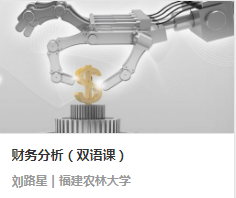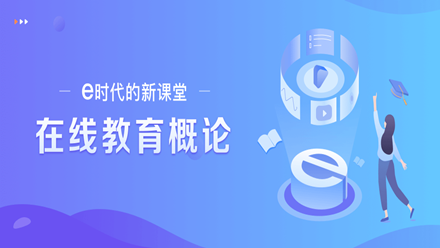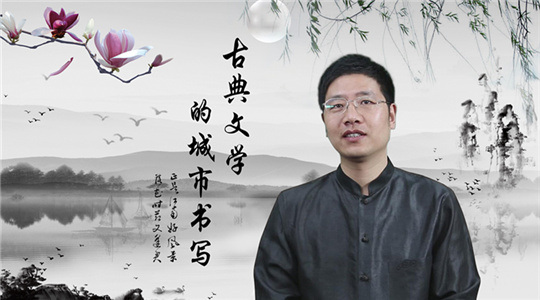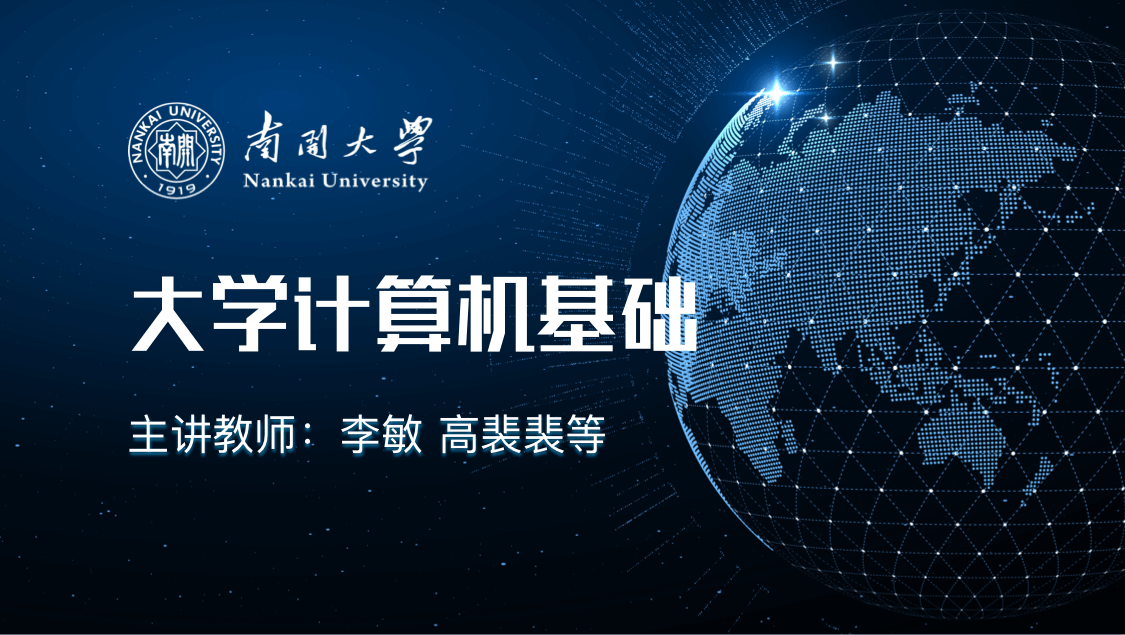
当前课程知识点:e时代的新课堂——在线教育概论 > 第一章 解读在线教育 > 1.5课程内部体系和外部关系 > 1.5课程内部体系和外部关系
同学们 经过前面四节课的学习
Everyone, after the previous four lectures,
我们已经了解了在线教育的现状
we've learned the current status of online education,
知道了什么是在线教育
the nature of online education,
以及在线教育给我们老师的教学
opportunities and challenges to our teaching
带来了哪些机遇和挑战
brought about by online education,
也熟悉了在线教育的发展历史
as well as the history of online education development.
在接下来的几周里
In the next few weeks,
我们会逐一为大家介绍
we'll talk about the following topics one-by-one.
为什么要做在线教育
Why should we engage in online education?
高校的在线教育现状
The current status of online education in universities.
在线教育的未来发展
The future development of online education.
以及分享一些实践教学的案例
Then we'll share some cases in teaching practices.
在我们这门e时代的新课堂
Except for this course,
在线教育概论课之外
"New classroom in the E-era: An Introduction to Online Education,"
还有两门相关的课程
we also have two related courses.
一门课是2014年
One was put online
秋季学期上线的
in the fall semester of 2014.
e时代的大佬师
It was is called
慕课教师的修炼心法
"Outstanding Teachers in the E-era: The Secret of Being a MOOC Teacher"
还有一门是2015年
The other was put online
秋季学期上线的
in the fall semester of 2015
e时代的教与学
with the title of
慕课引发的混合式教学
"Teaching and Learning in the E-era: Blended Teaching Brought about by MOOC"
那这三门课有什么关系呢
What's the relationship between the three courses?
首先我们这门课e时代的新课堂
First of all, this course,
在线教育概论是一门宏观的
"New classroom in the E-era: An Introduction to Online Education"
概论性的课程
is an introductory course from a macroscopic point of view.
在这门课当中我们介绍了
In this course, we introduce you
国内外在线教育的最新进展
to the latest development of online education at home and abroad
和行业的最新变化的一些情况
and some of the recent changes in the industry.
在我们这门课里面
We try to
我们努力的把理论和实践
combine theory with practice
很好的结合起来
in the course
为大家来分析和解读
to analyze and interpret
在线教育未来发展的趋势
the future trend of online education.
我们也给大家介绍了
We will also show you
通过在线教育的创新
some attempts and practices
去解决传统教育里面
to solve problems of traditional education
问题的一些尝试的路径
through the innovation
和一些实践
of online education.
那么e时代的大佬师这门课
"Outstanding Teachers in the E-era: The Secret of Being a MOOC Teacher"
是清华大学在线教育办公室
was created by Mr. Wang Shuaiguo
王帅国老师主讲的课程
from Tsinghua University's Online Education Office.
这门课的主要内容是认识慕课
The main idea of the course
设计慕课 制作慕课
is how to understand, design, make and run a MOOC.
运营慕课和一些慕课实战的案例
And it also gives us some MOOC cases.
大家可以看到这门课
As we can see,
非常聚焦在慕课
it focuses on every step of MOOC,
从设计到运行的各个方面
from design to operation.
那么e时代的教与学这门课
While "Teaching and Learning in the E-era: Blended Teaching Brought about by MOOC"
是由清华大学电机系的
was created by Professor. Yu Xinjie
于歆杰教授主讲的课程
from the Department of Electrical Engineering at Tsinghua University.
这门课是从混合式教学这个角度
This course was designed
进行着眼设计的
from the perspective of blended teaching.
课程主要介绍怎么样去规划
It mainly tells us
线上和线下的教学安排
how to arrange online and offline teaching
怎么样来设计线下的教学环节
and how to design offline teaching procedures
来取得良好的混合式教学的效果
to acquire favorable effects of blended teaching.
清华大学首批混合式教学
The first batch of teachers from Tsinghua University
改革实践的老师们
engaged in blended teaching
在这门课里面充分地分享了
have fully shared their experience
自己的一些经验
in this course.
大家可以看到这门课实际上
As we can see,
是聚焦在混合式教学方面的
the course focuses mainly on blended teaching.
那么我们e时代的新课堂这门课
Our course, "New classroom in the E-era"
是一门概论
is an introductory course.
那么e时代的大佬师
"Outstanding Teachers in the E-era"
和e时代的教与学
and "Teaching and Learning in the E-era"
是分别聚焦在慕课建设和运行
focus respectively on
以及混合式教学的开展
the construction and operation of MOOC
这两个方面
and the practice of blended teaching.
所以大家在学习了
Therefore, after learning
我们这门概论课之外
this introductory course,
如果还感兴趣的话
you may try the other two courses
可以再学习一下其他两门课
if you are interested in them.
那么就能对在线教育
In this way,
有一个更深入的了解了
you'll have a deeper understanding of online education.
-混合式教学该怎么做?与清华老师一起聊聊
-看清华老师如何进行大班混合式教学
--Video
-如何做好混合式课堂的互动
--Video
-与清华大学老师聊聊慕课独特的教学设计
-“挑战60s”授课短视频大赛
--Video
-与清华大学老师聊聊慕课的制作与运营
--Video
-1.1在线教育发展现状
--html
-1.1.1在线教育带来了e时代的新课堂
-1.1.2师生说
--1.1.2师生说
-1.1.3我国在线教育的特点
-1.2什么是在线教育
--html
-1.2.1概念解析
-1.2.2教育的技术发展史
-1.2.3在线教育的五要素模型
-1.3在线教育对教师的机遇与挑战
--html
-1.3.1机遇篇
--1.3.1机遇篇
-1.3.2挑战篇
--1.3.2挑战篇
-1.4在线教育发展的历史
--html
-1.4.1二十世纪的发展
-1.4.2二十一世纪的发展
-1.4.3在线课程三要素
-1.4.4虚拟教育组织
-1.5课程内部体系和外部关系
-第一章 解读在线教育--单元习题
-讨论题
-2.1数字时代带来教育变革
-2.2在线教育更适应学生的学习需求
--html
-2.2.1教育需求的发展
-2.2.2学习风格与学习类型
-2.2.3多模态数据分析学生学习行为与需求
-2.2.4教育目标
-2.2.5拓展学习时空,促进深度学习
-2.2.6自主学习系统的案例分享
-2.3在线教育帮助教师成长
-2.4学校和国家为什么要做在线教育
-单元习题--作业
-3.1高等学校在线教育发展
-3.1.1学校现状
-3.1.2平台与联盟
-3.2不同类型的教师都能得益于混合式教学
-3.3混合式教学的好处
-3.3.1当前的教学问题
-3.3.2教师和学生的收益
-3.4混合式教学的关键细节与常见误解
-3.4.1关键细节一
-3.4.2关键细节二
-3.4.3关键细节三
-3.4.4误解篇一
-3.4.5误解篇二
-3.5智慧教学工具的发展
-3.5.1综述篇
--3.5.1综述篇
-3.5.2雨课堂的诞生
-3.5.3雨课堂的功能
-3.5.4课堂教学需要雨课堂
-3.5.5雨课堂解决面授时间紧张的问题
-3.5.6雨课堂解决课前课中课后的学习效果问题
-3.5.7课前课中课后雨课件设计要点
-第三章 高校在线教育进行时--单元习题
-讨论题
-讨论题
-4.1教育实践的展望(一) 教育创新
-4.2教育实践的创新(二) 教育技术与决策
-4.3教育理论的热点趋势
-第四章 在线教育的未来--单元习题
-讨论题
-5.1邓俊辉老师《数据结构》与《计算几何》教学案例
--html
-5.1.1慕课制作与使用心得(一)
-5.1.2慕课制作与使用心得(二)
-5.2张瑜老师《思想道德修养与法律基础》教学案例
--html
-5.2.1教学理念与混合式教学的主要环节
--Video
-5.2.2章节实例
-5.3杨芳老师《大学英语》教学案例
--html
-5.3.1混合式教学设计心得
-5.3.2 University单元教学设计
-5.4于歆杰老师《电路原理》教学案例
--html
-5.4.1小容量班级完全翻转课堂
-5.4.2大容量班级部分翻转课堂
-5.5郑莉老师《C++语言》教学案例 雨课件样例及校内教学心得分享
--Video
-单元习题--作业






